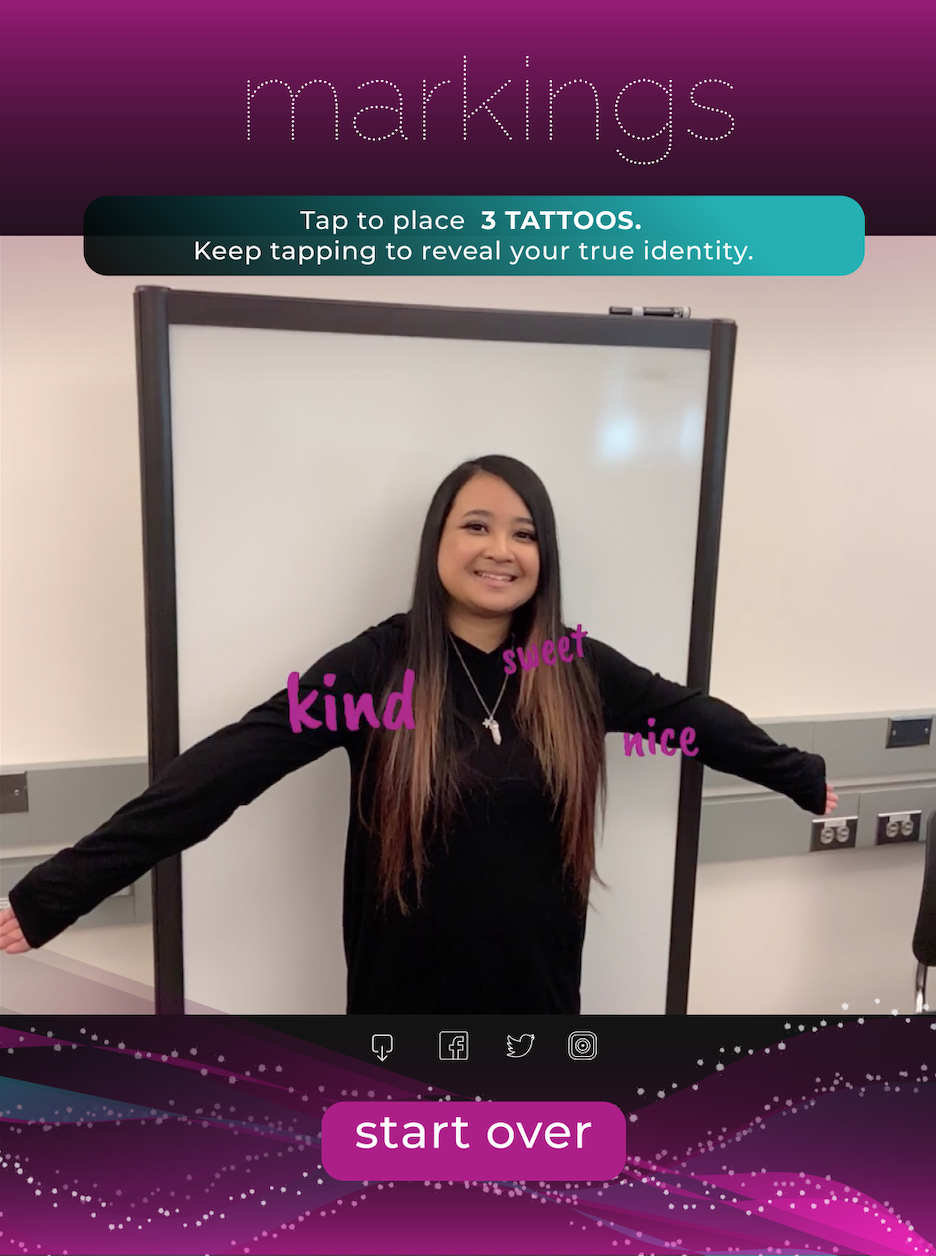Markings
- XCode
- ARKit
- Adobe Indesign
- Developer
- Creative Director
- Winter 2019
- 4 Weeks
Tools Used
Project Roles
Time
An AR app that challenges users to transform and examine the words they are labeled with.
Challenge
We were tasked with investigating the basic uses of XCode's AR kit technology and creating a prototype of an app that utilizes those tools. Markings was pitched as an app that would allow people to preview custom tattoos on their own body using their phone. After discovering the existence of InkHunter, an app with a similar purpose, our team realized that it would be more beneficial to alter Markings' focus so that it served a more unique need.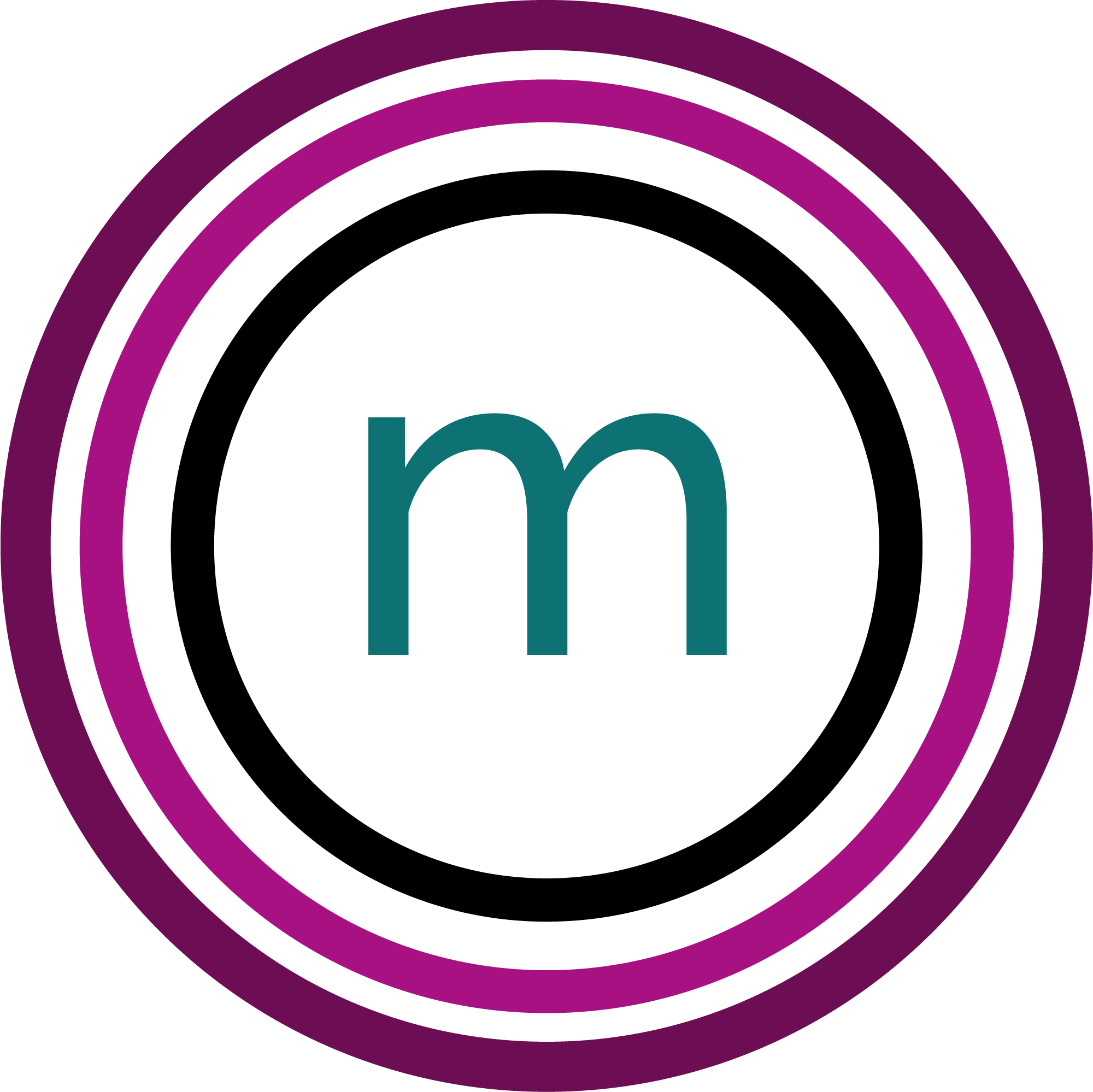
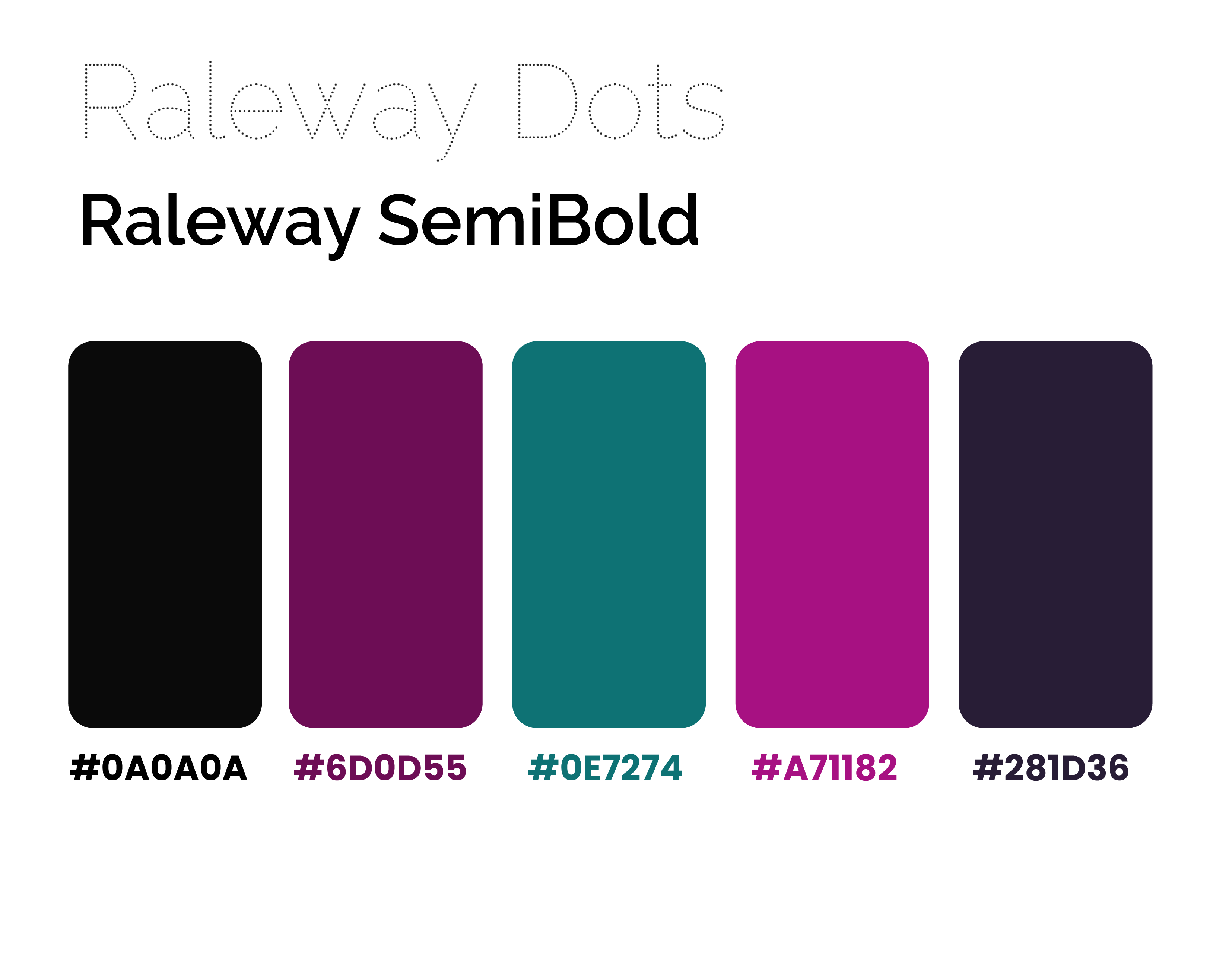
Ideation
To make the make Markings more unique, we drew in inspiration from videos that present tattoos as performance art, which then led to the ideation of “Markings.” Instead of simply previewing tattoos on the body, the app focuses on the problems of stereotypes and labels. Users would be able to overturn those labels by creating an identity for themselves. With a new goal in mind, our team set out to build a prototype of Markings.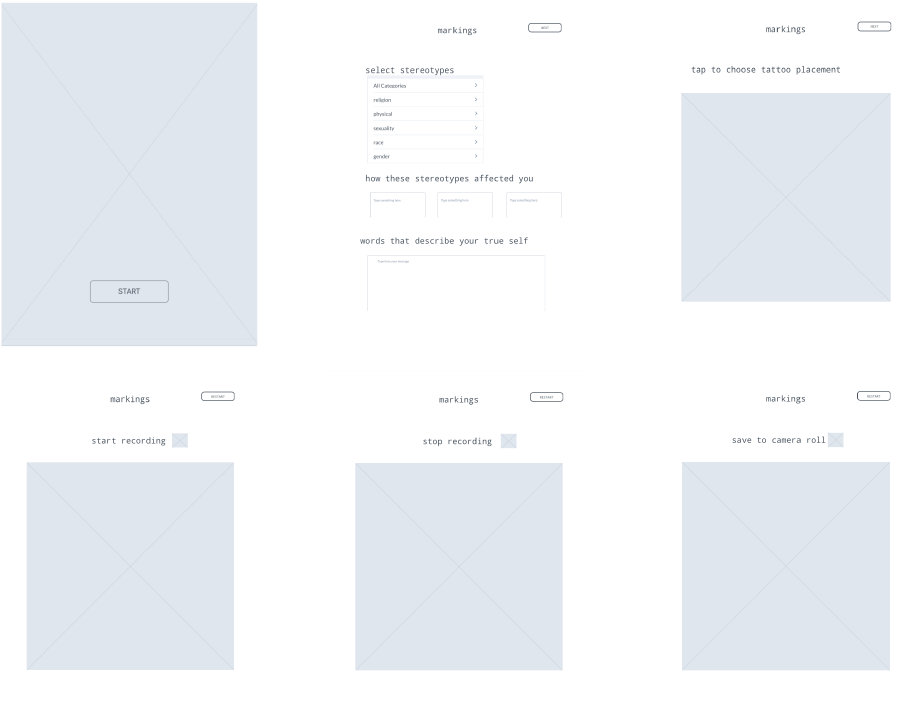
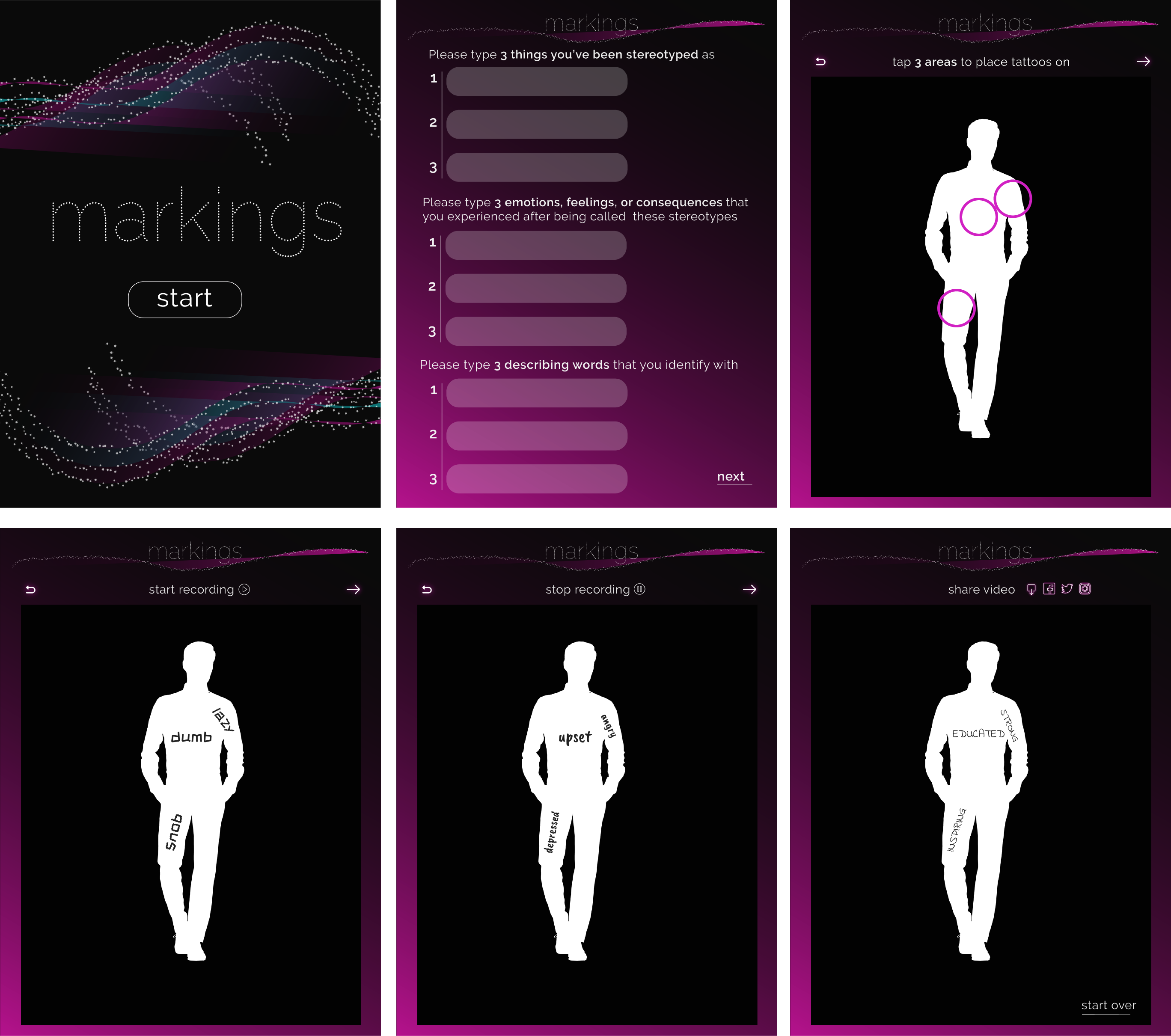
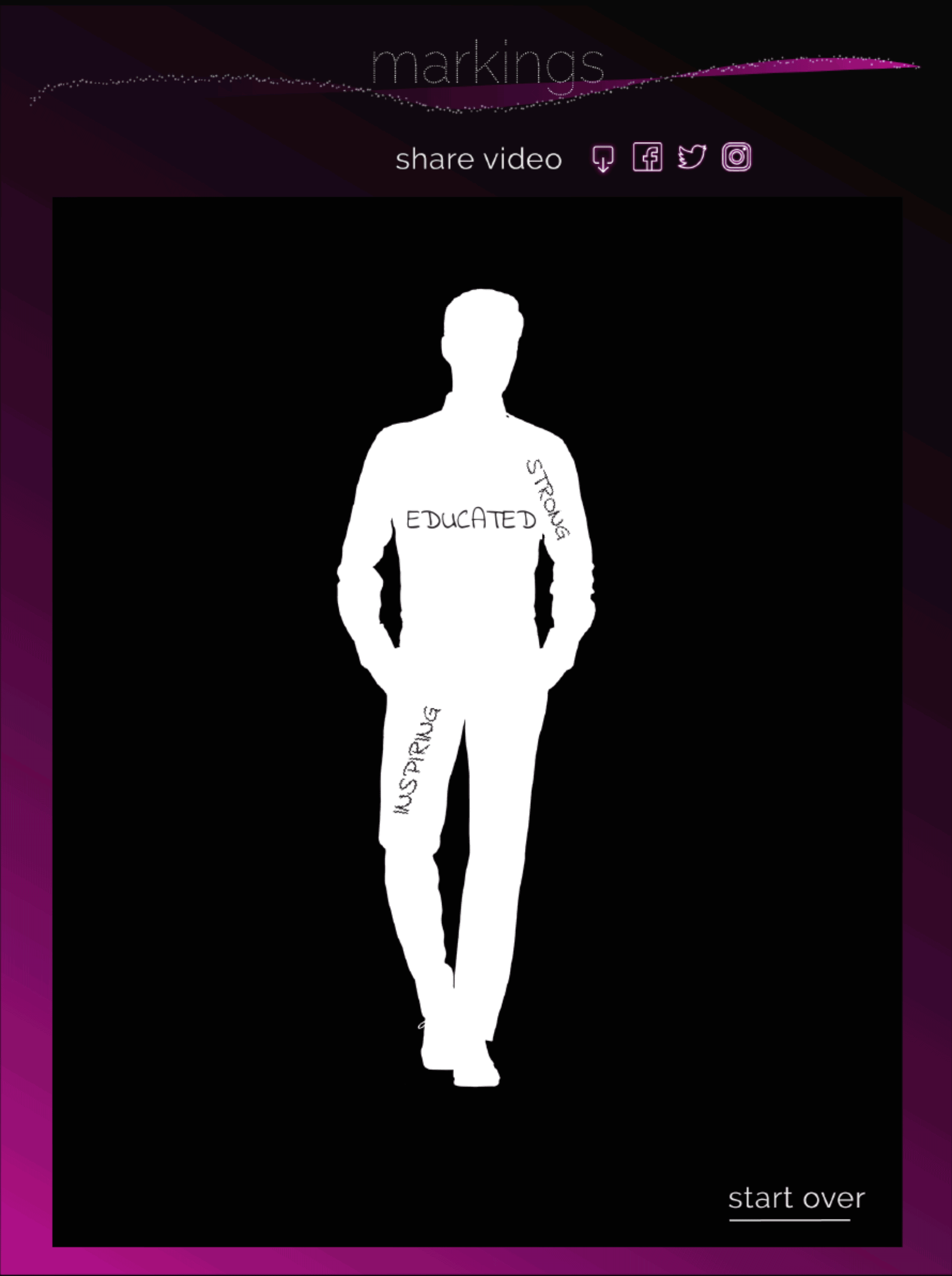
Concept/Code
As much as I'd like to claim a stake in the stellar visual theme of Markings, most of my work on the project was in other areas. I found myself investing much of my effort into reorienting Markings it from its original pitch and problem solving so that we could get a prototype of our new concept working.Words on the human body evoke a powerful impression. Tattoos are often used as a means of expressing one's inner thoughts, outwards. Society categorizes and labels people, determining social structure and power.
Taking these three ideas into consideration, Markings takes advantage of how labels affect people and their thoughts. The app aims to help users recontextualize the negative labels they deal with, providing a format for a performance of affirmation. This is accomplished by having users type out these words, place them on their body with the AR camera, and film the words as they transform on their body. These videos can then be saved, shared, or retaken.
Reflecting on the cursory knowledge I'd attained on XCode's AR Kit, I opted to focus on dropping three dimensional text wherever the user physically placed the device. The user moves their device to the desired location of "tattoo text" and taps the screen to drop it into the AR space.


